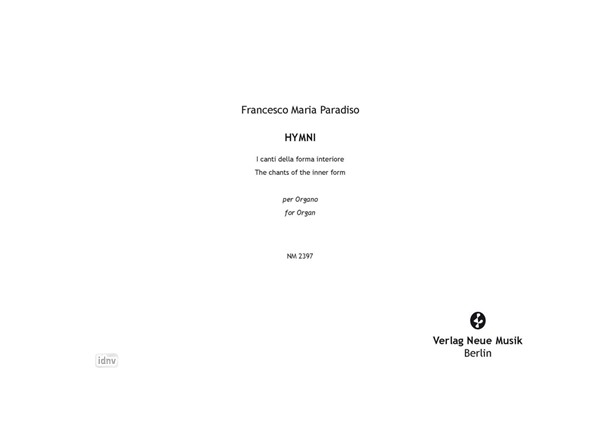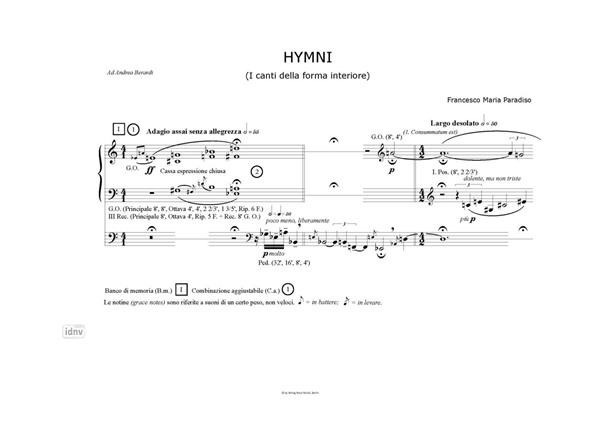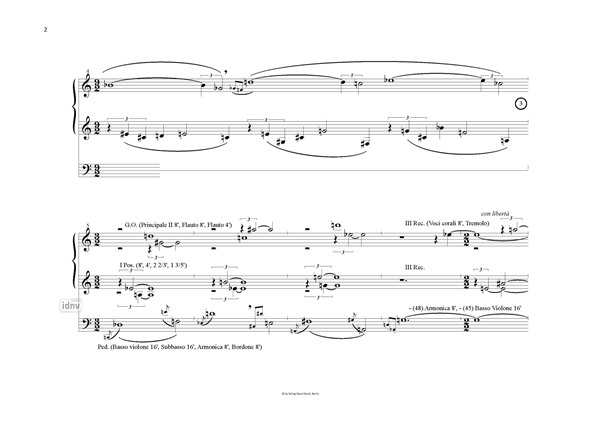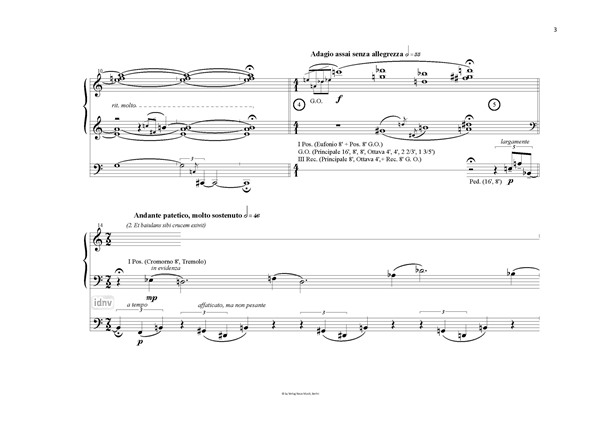Your basket is currently empty!
HYMNI für Orgel (2015)The Chants of the inner formI canti della forma interiore
Instrumentation: Organ
Organ
Length (h:m:s): 00:11:00
Spiral stiched
Format: 25 x 35,3 cm
Pages: 22
Weight: 140 g
Verlag Neue Musik / NM2397
ISMN: 9790203229797
ISBN: 9783733316020
incl. VAT
plus delivery costs
Organ
Length (h:m:s): 00:11:00
Spiral stiched
Format: 25 x 35,3 cm
Pages: 22
Weight: 140 g
Verlag Neue Musik / NM2397
ISMN: 9790203229797
ISBN: 9783733316020
incl. VAT plus delivery costs
18,80 €
Delivery time: 10 days
Between Grecian age and Roman classicism, the emotional energy together with the charm of the melody and lyric poetry created the hymns. During the Latin Christian period, the whole of these reexperienced three elements became a truly pristine genre. For the ability to represent through images the human inner dimension, the religious sense, in the Christian tradition hymns are still nowadays the proper singing for everyone, the “Voice of the Church”. For these reasons I have chosen the ancient hymn of Vexilla Regis pròdeunt as generative and unifying motif of the composition. I have chosen the irresistible and symbolic power of the dramatic tension of the form and ‘scene’ of the cross to support the processes of in-formation and de-formation of a ‘sound image’ which are one of the objectives of this work.
Pavel Evdokimov wrote: “To understand the modern art we must find the origins of the sacred art”. As the art of the catacombs, also the art of our time finds again freedom, purfies itself from any pre-constituted forms through a lesser attention to the shapes and the abandonment of any artistic concern. The composing of our times creates “erasing”.
HYMNI aspires to be the epiphany of an inner shape or an inner condition, a delicate but intense “vision” and this by means of its own two natures, meditative and epic-dramatic. The composition tends to become an “icon”, or, because of its short dramatic episodic form, a series of “icons” painted with sounds. 1. Consummatum est, 2. Et baiulans sibi crucem exivit, 3. Et inclinato capite, 4. Tradidit spiritum are emotional states, fragments of melodic lines, lyrical images stolen from the Gospel of John. The finale using the canon on the ancient line of the Vexilla Regis pròdeunt suggests
proceeding together, the way of the cross. The inserts entrusted to the decision of the performer are reiterations of listening and of the memory.
HYMNI is an “icon” that while using harsh but not complacent tone colors (like the surface of a wall or of a table, the “metaphysical” surface of an icon) sings, condenses and consumes itself in the most gracious essence “painted” by the last verse of the hymn of Venanzio Fortunato: O crux, ave, spes unica. Hoc passionis tempore. Piis adauge gratiam. Reisque dele crimina.














